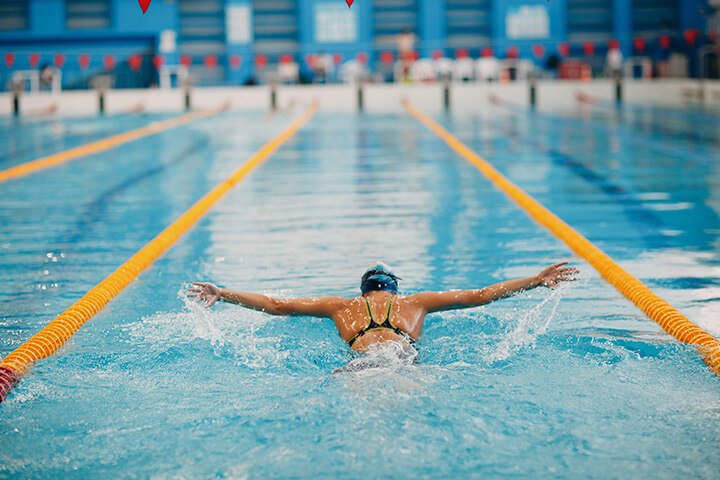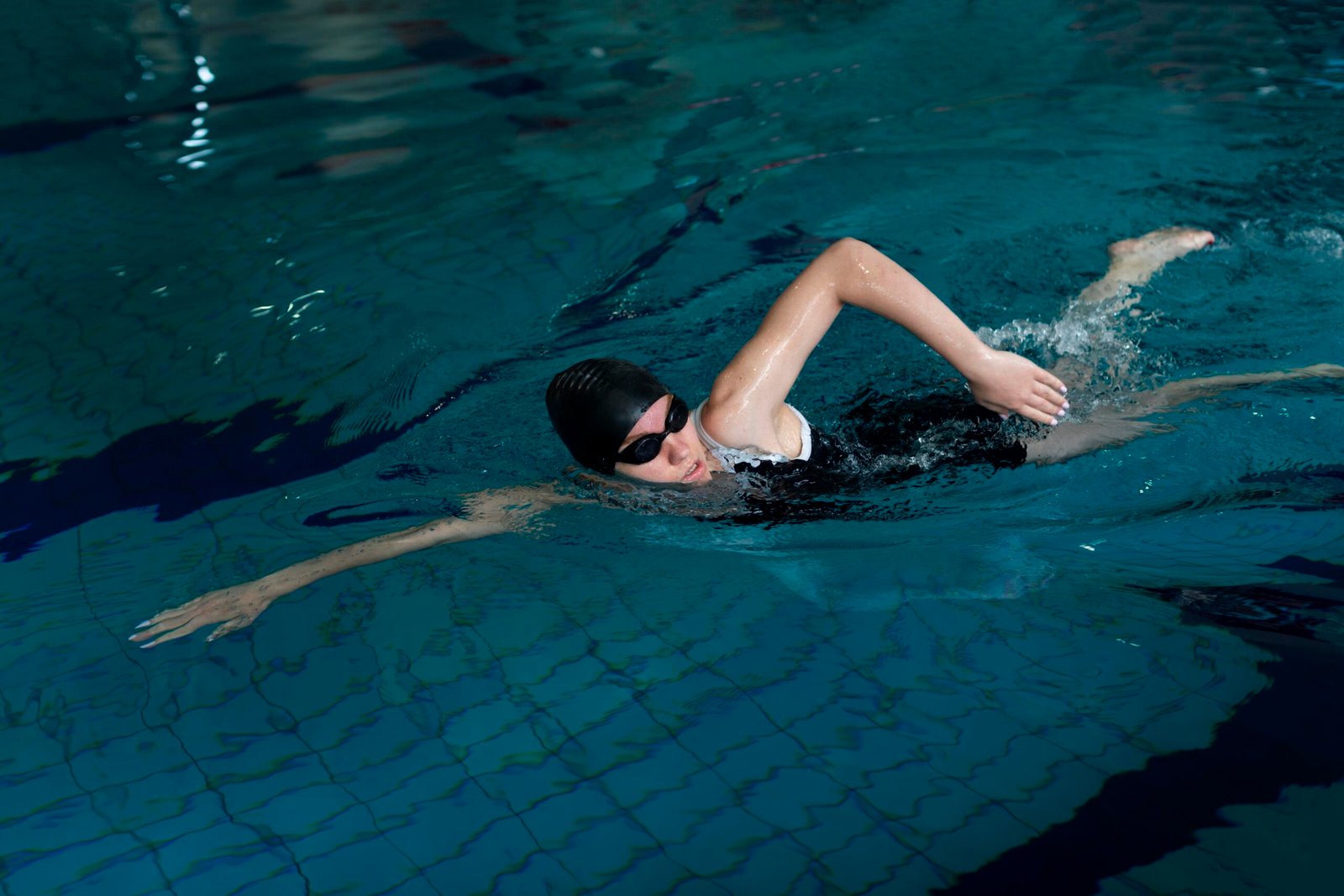Now Reading: Top 10 Benefits of Swimming to BoostYour Health and Fitness
-
01
Top 10 Benefits of Swimming to BoostYour Health and Fitness
Top 10 Benefits of Swimming to BoostYour Health and Fitness

Top 10 Benefits of Swimming for Your Health and Fitness
Benefits of Swimming isn’t just a summer hobby or a sport—it’s one of the most powerful and versatile forms of exercise available. Whether you’re looking to boost your heart health, tone your muscles, or find peace of mind, swimming checks all the boxes.
Unlike many high-impact workouts, swimming is gentle on the joints while still offering intense, full-body benefits. And the best part? It’s suitable for all ages and fitness levels—whether you’re a beginner, a senior, or someone returning to fitness after a long break.
Let’s dive into the top 10 benefits of swimming for your health and fitness.
1. Improves Cardiovascular Health
Swimming is an excellent aerobic exercise that elevates your heart rate, boosts circulation, and strengthens your heart over time. Regular swimming can help lower blood pressure, improve cholesterol levels, and reduce your risk of heart disease.
It’s a great choice for those who want to protect their heart without putting stress on their joints.
2.Builds Full-Body Strength and Muscle Tone
Swimming engages nearly every major muscle group—arms, legs, core, back, shoulders. The resistance of water forces your body to work harder than on land, which builds lean muscle and enhances endurance.
Unlike weightlifting, which targets specific areas, swimming creates balanced strength and tone throughout the body.
3. Gentle on Joints and Bones
Because water supports up to 90% of your body weight, swimming is an ideal low-impact exercise. It significantly reduces the strain on your knees, hips, and spine, making it perfect for:
- People with arthritis
- Older adults
- Those recovering from injury
- Beginners easing into movement
You get all the benefits of movement—without the pounding impact.
4. Boosts Mental Health and Reduces Stress
Swimming is more than physical—it’s therapeutic. The repetitive motion, rhythmic breathing, and weightless feeling in water can help calm the mind, reduce anxiety, and lift your mood.
In fact, studies have shown that swimming regularly can decrease symptoms of depression and mental fatigue. The peaceful, meditative quality of swimming makes it a natural stress reliever.
5. Improves Sleep Quality
Struggling to fall or stay asleep? Swimming might help. Regular physical activity, especially one as calming as swimming, can improve sleep patterns and reduce insomnia.
Since it reduces anxiety and helps regulate hormones like cortisol and serotonin, swimming prepares your body and mind for restful sleep.
6. Aids in Weight Management
Swimming is a calorie-burning powerhouse. Depending on your intensity and stroke, you can burn anywhere from 400 to 700+ calories per hour. It boosts metabolism and helps manage weight, especially when paired with a balanced diet.
Plus, the low-impact nature makes it more sustainable than high-stress workouts that might lead to burnout or injury.
7. Enhances Flexibility and Mobility
Swimming involves stretching, reaching, twisting, and pulling—all movements that increase your flexibility over time. The water supports these motions while providing resistance, which also strengthens the joints.
If you’re someone with stiff joints or limited range of motion, swimming can restore movement without pain.
8. Increases Lung Capacity and Respiratory Health
Because swimming requires controlled breathing, it naturally trains your lungs to work more efficiently. Over time, swimmers develop better lung capacity, improved oxygen use, and stronger respiratory function.
This makes swimming especially helpful for people recovering from respiratory issues or looking to boost stamina.
9. Safe and Fun for All Ages
Swimming is a rare workout that can be enjoyed from childhood to old age. Whether it’s a young child taking their first splash or an older adult maintaining mobility, swimming offers a safe and joyful experience for everyone.
Even if you don’t know how to swim yet, learning as an adult is completely possible and incredibly empowering.
10. A Life Skill That Could Save Your Life
Lastly, swimming is more than a workout—it’s a lifesaving skill. Knowing how to swim can protect you and others in emergency situations. For children and adults alike, this ability adds confidence, safety, and peace of mind.
Whether you’re swimming at the beach, a lake, or a local pool, it’s a skill that blends fitness with safety.
Personal Reflection
I used to treat swimming as something “extra”—something I’d do when I had time. But once I made it a regular part of my fitness routine, I felt the difference almost immediately.
It’s not just the physical benefits. It’s the emotional reset. There’s something about being in the water that slows the world down. No phone, no noise, just you, your breath, and the gentle rhythm of movement.
Now, it’s my go-to whenever I need to reset my body and mind.
Tips to Get Started with Swimming
If you’re new to swimming or haven’t been in the water for a while, here are some quick tips:
- Start slow – Even 15–20 minutes is a great beginning.
- Use swim aids – Kickboards, pool noodles, or goggles make things easier.
- Take lessons – Adults can benefit from beginner classes too!
- Try aqua fitness – Water aerobics or walking in water are great alternatives.
- Be consistent – Aim for 2–3 sessions per week for noticeable results.
Most importantly, enjoy it. You’re not just working out—you’re caring for your whole self.
Swimming offers a unique blend of strength, cardio, flexibility, and calm—all wrapped into one low-impact workout. No matter your age, body type, or fitness level, there’s a place for you in the pool.
It’s not about being fast or doing laps like a pro. It’s about moving your body in a way that feels good, safe, and sustainable. So next time you think about how to improve your health, reduce stress, or add variety to your routine—take the plunge.
Your body (and mind) will thank you.















